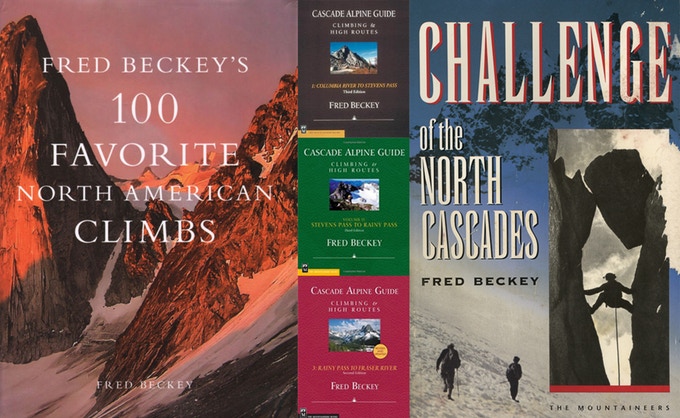Fred Beckey high in the Himalaya, 1955. Photo courtesy of the Fred Beckey Archives.
King of the Mountains
There are volumes to learn from the explorations and adventures of Fred Beckey, the most accomplished climber of all time
Fred Beckey (BA 1949) was just 16, a wiry kid fresh out of the Boy Scouts, when he joined REI founder Lloyd Anderson in the first successful climb of Mount Despair, a 7,300-foot pyramid of rock and ice in the Picket Range of the North Cascades that the estimable Mountaineers Club had deemed “unclimbable.”
It was an assessment that Beckey would disprove again and again and again in his long and remarkable life.
Over the next eight decades, his relentless exploration of wild and uncharted places produced more first ascents and virgin routes—across the great mountain ranges of North America and around the globe—than any climber who has ever lived.
His exquisitely rendered guidebooks became sacred texts for alpinists of every ability, his meticulous detail and elegant prose inviting them into his vertical world.
And, perhaps above all of these achievements, Beckey became an enduring symbol of life, liberty and the uncompromising pursuit of passion—for the footloose and deskbound alike.
“Anywhere there are mountains,” says Doug Leen, a frequent climbing partner in the 1960s and ’70s, “Fred became legend.”
But just who was the man behind this legend?
Restless prodigy
Wolfgang Gottfried Beckey was born in 1923 near Dusseldorf, Germany, and immigrated with his family to the United States in 1925.
From an early age, it was clear that Fred was not like other kids. He led his younger brother, Helmy, on innumerable adventures in the forests, hills and waterways of and around their adopted home of Seattle. “I became fascinated by landscapes,” Beckey later wrote of his childhood, “and also learned to finesse the conflicting demands of wild nature for a certain freedom from convention.”
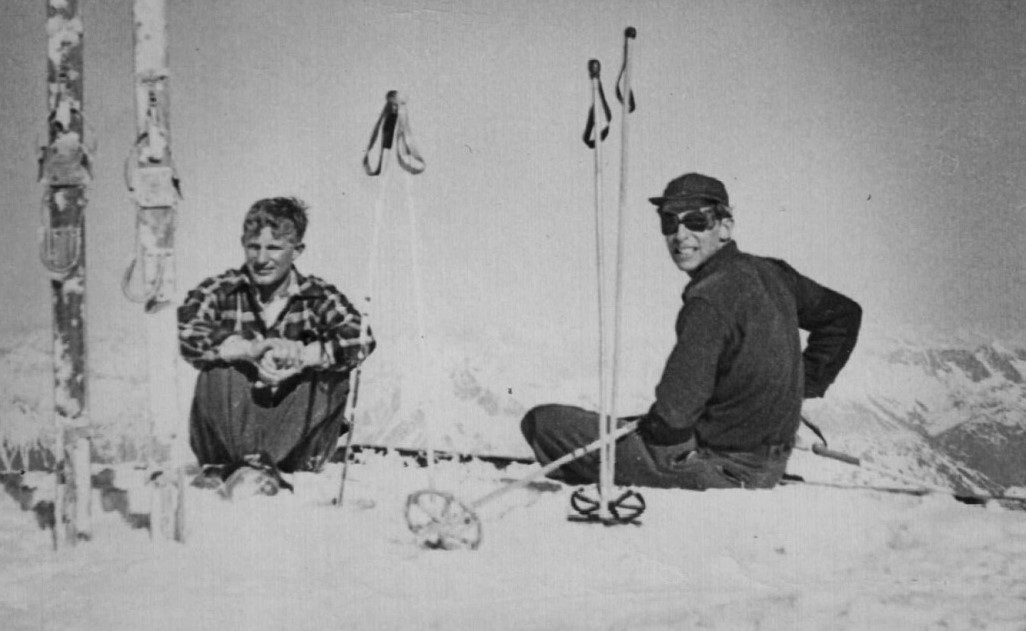
This freedom was fully endorsed by his father, a physician, and mother, an opera singer.
“Fred’s parents were a little bit different, too,” says Megan Bond, Beckey’s confidant and biographer. “They encouraged their boys to be independent, to be free thinkers. And they certainly never held them back.”
Their eldest grew especially strong and self-reliant, bold and confident. He found purpose in the Boy Scouts, who valued his skills and leadership qualities and looked past the eccentricities that left him a target of bullies at school. The Scouts were also his initial ticket to the mountains that had always captivated him. Of one of his earliest climbs, in the Olympic Range, he recalled “surveying the surroundings with a sense of awe,” and feeling a “kinship with the noble, almost unbelievable peaks and tumbling glaciers.”
Soon Beckey was teaching mountaineering and climbing every peak and crag he could get his hands on, including Despair in the summer of 1939, the first of many firsts.

Fred and Helmy climbed incessantly in those days, pioneering routes up the remote peaks of the Pacific Northwest.
So it’s a small irony that a second ascent is what really ignited the Beckey legend.
In 1942, the Beckey boys spent much of the summer slogging toward the top of Mount Waddington, a 13,000-foot rampart of the remote British Columbian Coast Range that was crowned by a fang of rock and defended by hanging glaciers and wicked weather. This menacing mountain, once described as “a nightmare in its grim inaccessibility” had been summited only once before, by North America’s premier alpinist.
But at dusk on the 5th of August, 19-year-old Fred and 17-year-old Helmy, wearing hobnail boots on ice and felt-covered tennis shoes on rock, pulled themselves over the top.
After this remarkable show of endurance and audacity, the climbing world would forever know the name Beckey.
School days
During the Second World War, Fred served in the US Army’s vaunted 10th Mountain Division, training soldiers for alpine combat.
When the war was over, he enrolled at the University of Washington on the GI Bill. “Education was important to his family,” Bond says. “He began college with the intention that he would graduate and settle into a career like everyone else.”
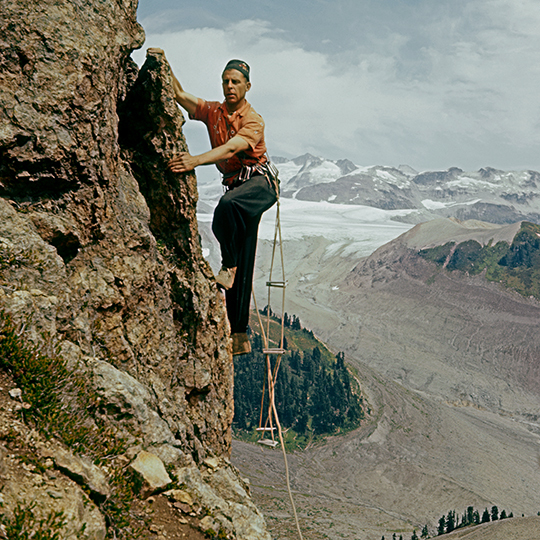
But a less conventional path beckoned. In the margins between his serious business studies, Beckey squeezed in 70 climbing expeditions during his college years—not counting some reported late-night ascents of the gothic buildings on the Liberal Arts Quad.
In 1949, the year of his graduation, Beckey published the first edition of his “Climber’s Guide to the Cascades and Olympic Mountains,” which would expand, over time, into a three-volume tome known as the “Beckey Bible.”
By now, he was fully in thrall of the mountains. He considered going into finance or law, but neither suited his personality nor his outdoor ambitions. Only work as a traveling salesman afforded him the treasure he truly sought: autonomy.
On the road
Beckey hit his stride in the 1950s and ’60s, zig-zagging the continent in his iconic pink Ford Thunderbird, a Kerouac hero bounding right off the page.
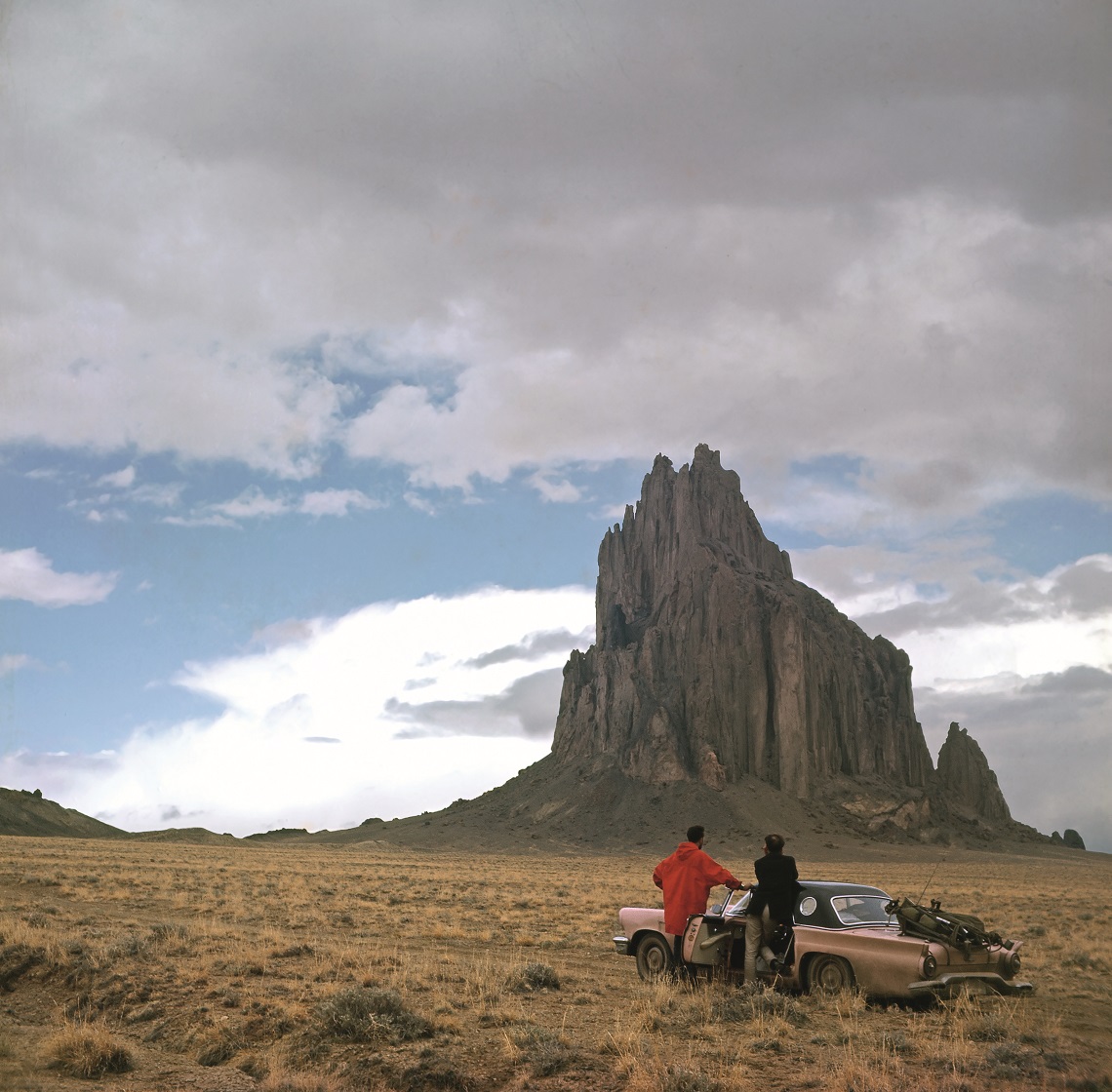
With his brother pursuing an opera career in Europe, Beckey collaborated with some of the greatest alpinists of the era in striking new routes and conquering old ones across the continent, from the Rockies to the Gunks, the Sierra Nevada to the Brooks Range, the Bitterroots to the Bugaboos.
In the summer of 1954, Beckey posted first ascents of two signature Alaskan peaks—Hunter and Debora—and a new route up Denali. In 1963, having been controversially left out of the first successful American ascent of Mount Everest, the greatest climber of his generation blitzed scores of other great peaks across multiple countries.
Eventually, Beckey’s range-roving extended to Europe, Asia, South America, Africa and Australia. In total, he logged thousands of lifetime climbs, each being painstakingly compiled into a compendium by Bond.
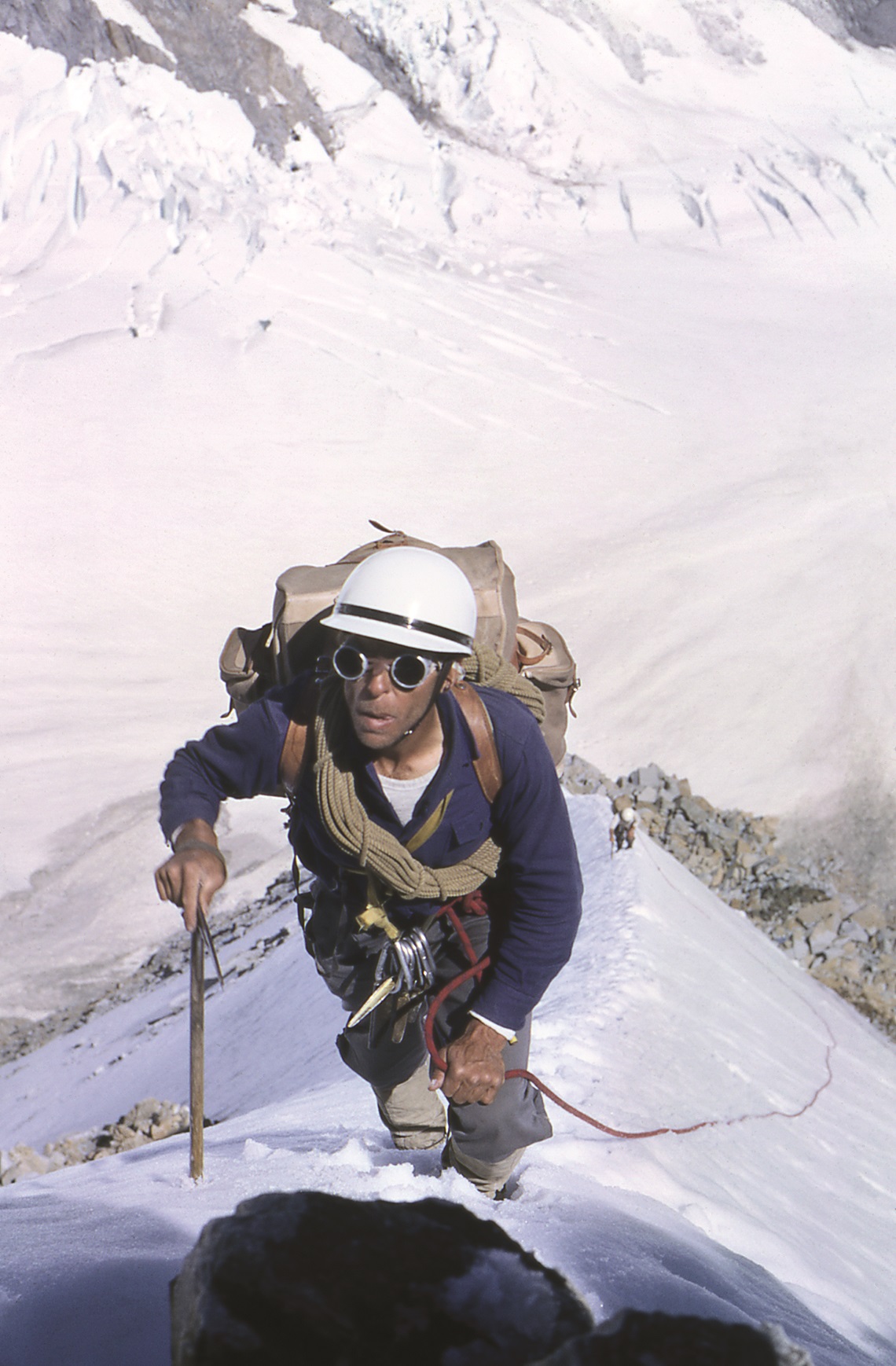
Beckey’s record might suggest a wild man climbing with feverish abandon. In reality, he was ambitious but never reckless, which explains his longevity. Reason and caution were his guides. And he approached each new endeavor in the mountains with considered strategy, and equal parts explorer, entrepreneur and engineer.
The explorer craved discovery of the inaccessible and untouched, no different from Lewis and Clark, Shackleton, Cousteau or Armstrong.
The entrepreneur assembled the best talent for the task, motivated transcendent performance and sweated every detail.
And the engineer found ways up a mountain that nobody else could see.
Alpinist engineer
“The brilliance of Fred was his ability to identify these incredible routes that no one else in the world would have or could have figured out,” says Leen, now a retired Seattle dentist and avid outdoorsman and historian. “And then he would somehow get the people together, the logistics right and the weather to cooperate so he could pull these things off in incredible style. He was an absolute engineer of alpinism.”
As Beckey grew older, he recruited “strong young bucks” for his adventures, says Leen, who was studying geology at the UW in 1966 when he and some friends were first conscripted by Beckey at a coffee house on the Ave. Not that they needed convincing.
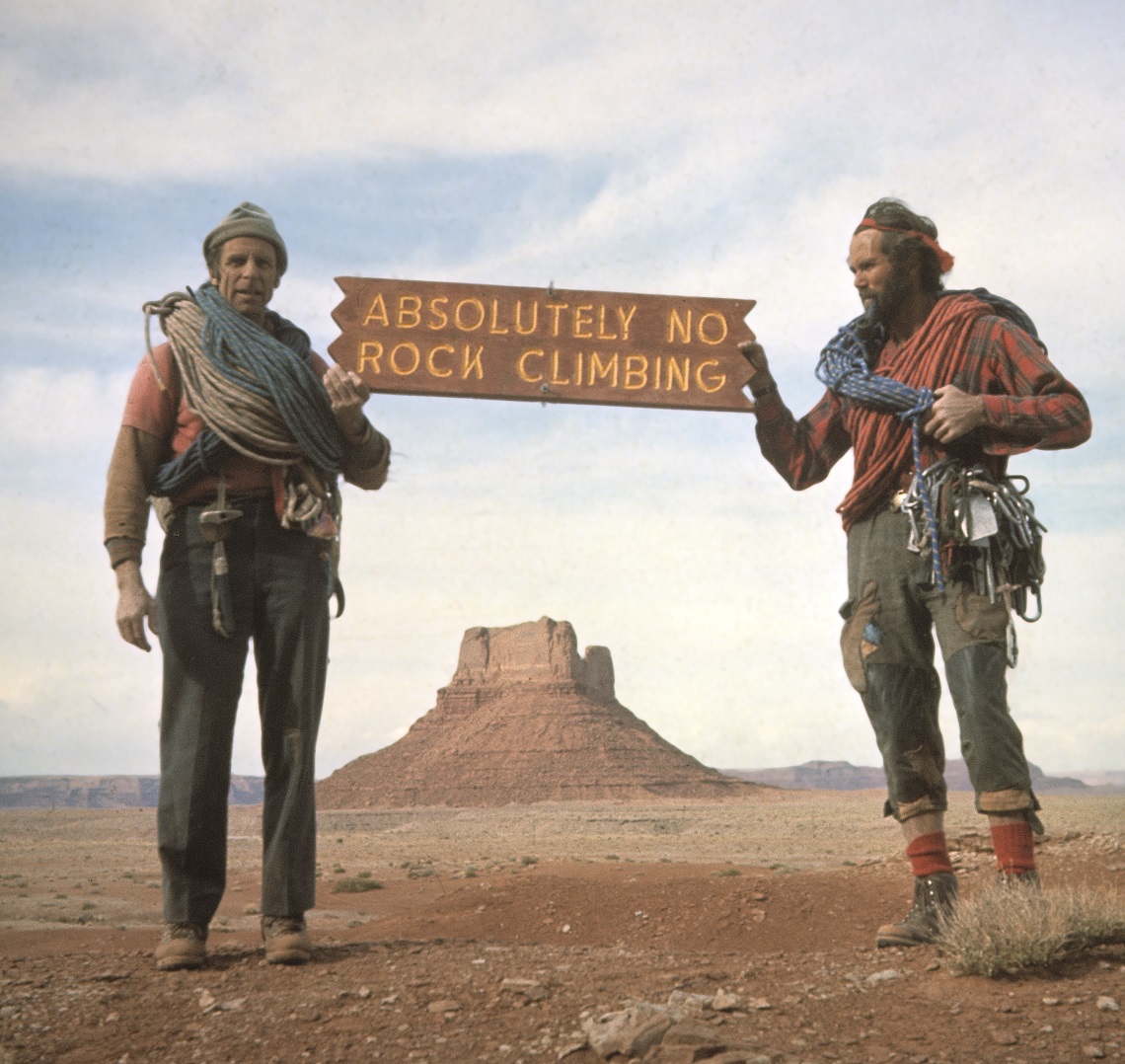
“We were absolutely in awe,” he recalls. “We had carried the Beckey Bible around with us in the North Cascades as Boy Scouts. He was a legend, even then.”
Beckey was also a dynamo. “Indefatigable” is how Leen puts it. “We’d go out for a week into the backcountry with him working on a new route. When we ran out of food, my friends and I would go home exhausted. But Fred would immediately recruit some new partners and head straight back in. And he was twice our age! He was amazing.”
Curriculum vitae
Just as amazing was his literary output. Since he was a boy, Beckey had always documented his observations about the world around him in exquisite detail. Eventually, his writing became the career that enabled his climbing pursuits—and vice-versa.
His legendary drive “fermented into a sort of sublime seeking,” wrote Michael Brick in a 2008 profile in the New York Times. “It appeared most vividly in his guidebook prose, a stirring amalgam of technical analysis, historical insight, geographical research and a sense of wonderment.”
Across his dozen books and hundreds of articles—“more scholarly works than most college professors,” notes Bond—Beckey revolutionized guidebook writing. He wove together evocative phrasing, crystalline description of routes and techniques, and exhaustive discourse on the history, ecology and geology of every mountain.
“He could so eloquently craft a sentence, almost like poetry,” Bond says. “Other times he wrote almost brutally.”
Beckey described Gibraltar Rock as “a frowning embattlement” and Kangaroo Ridge as “a bizarre museum of breathtaking rock sculpture.” He painted Silver Star Mountain’s “gables of rock” that “strike and dip in seemingly planned directions.”
Bond, who has studied Beckey from cradle to grave for her forthcoming biography, stands in awe of his literary contributions: “He did everything he could to bring the mountains to the people.”
The great unknown
It remains a point of fascination that this articulate man of letters was so famously enigmatic in person—even to the generations of climbing partners who shared countless hours together in a tent and on a rope.
“He was a hard guy to get to know,” says Ambrose Bittner (MBA 2007), who began climbing with Beckey in the 1980s. “If you asked Fred about his life, he’d change the subject. We’d talk strictly about the climb and the route and the weather and maybe college football. Very few people really knew Fred.”

Bond was one of those few. While living and traveling with Beckey during his last decade, she discovered an infinitely curious mind, a student of geology, politics, philosophy and history who was fascinated by the motivations of innovators and explorers. “I don’t know if the word ageless is right, but he certainly seemed timeless,” Bond says. “His intellectual energy never waned.”
As for Beckey’s own motivations for a life of unceasing exploration, she believes that he climbed because climbing made him happiest. “It’s that simple,” she says. “There was a competitive factor in his heyday, of course. But it was deeper than that. Climbing made him tick.”
A legacy in stone
The mountaineering world had begun to memorialize Beckey even before he died in October of 2017, at age 94. His unconventional life and extraordinary achievements were honored by The Mountaineers, American Alpine Club, Outdoor Industry Association and Climbing magazine. He was dubbed the “dean of North American mountaineering” and the “godfather of the road-trip.”
“Who’s going to be the next Fred Beckey?” asks Leen. “There won’t be another. Fred was one of a kind.”
That singular figure is also the subject of a 2017 documentary: “Dirtbag: the Legend of Fred Beckey.”
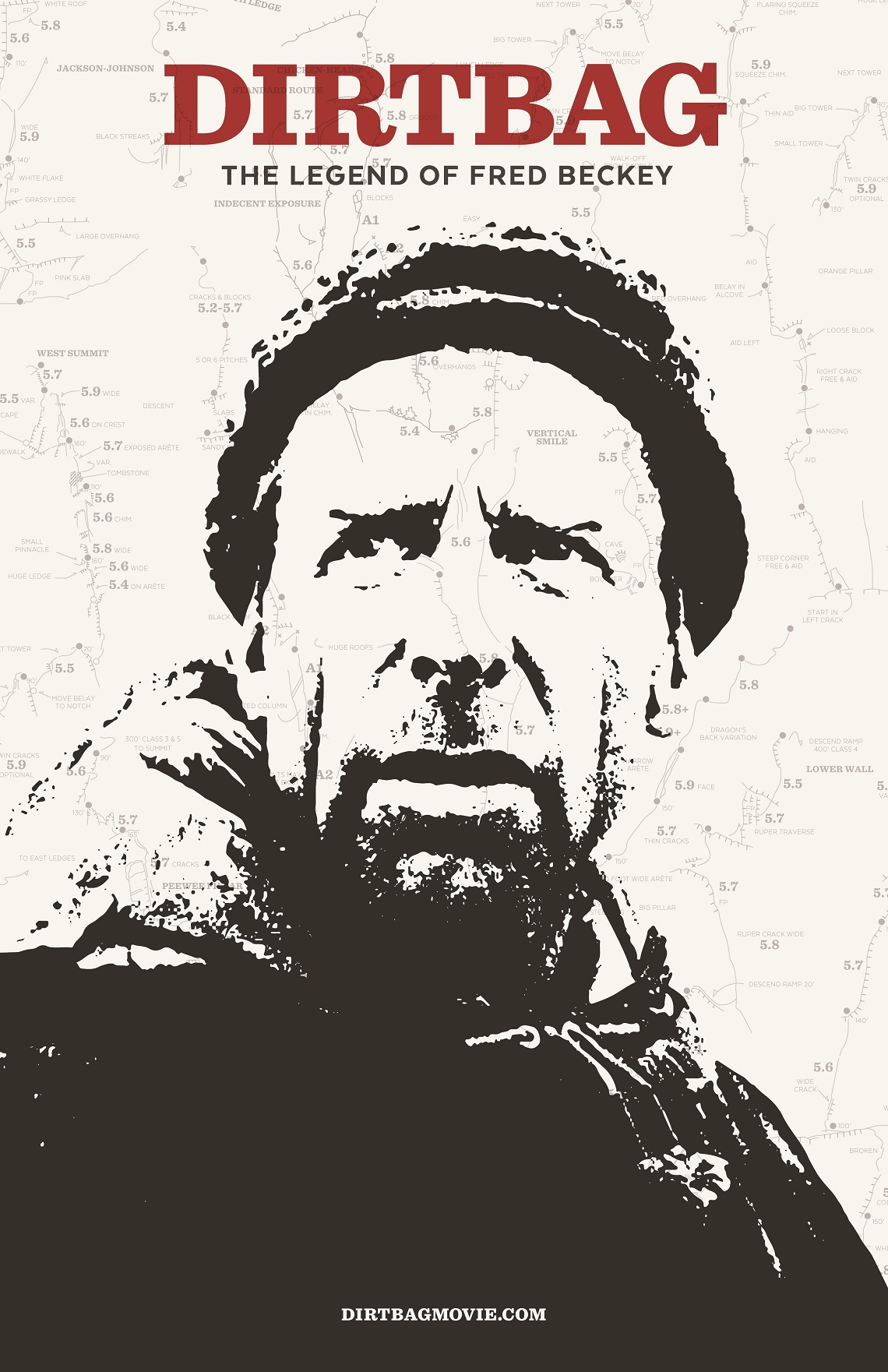
Bond believes the young filmmakers may have been over-enthusiastic in portraying Beckey as outlier and outlaw. She says he disliked this “dirtbag” persona—a term of endearment among vagabond climbers—though he also sometimes participated in this myth-making by “giving people a good Fred Beckey story to take home.”
But at the intersection of man and myth, there is a true and powerful legacy in his unwavering pursuit of passion, writ largest.
“It’s that ‘freedom of the hills’ thing,” says Bittner, the founder and managing director of Red Lantern Journeys. “Part of why climbers go into the mountains is to feel free. But for most of us, climbing is only a small part of our lives. Fred made a life out there.”
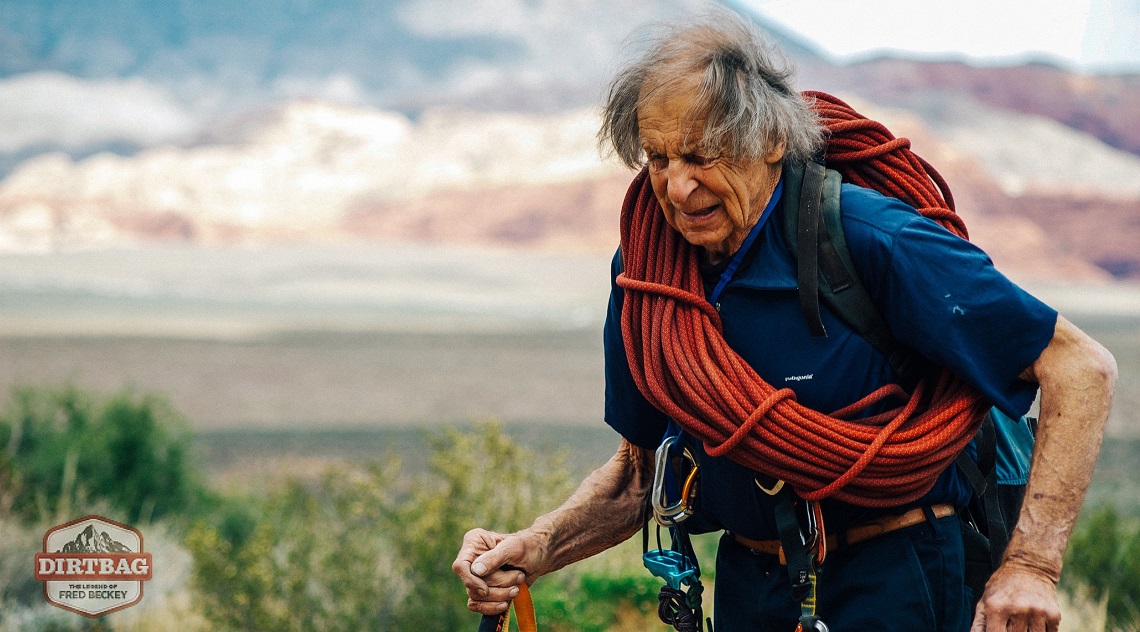
Bond says that Beckey didn’t consider himself a teacher. And he probably would have laughed at the notion that he should be anyone’s role model. But there is a valuable lesson in his example, the very way he existed. “It was life,” Bond says. “How to do life right. Fred always felt a sense of urgency and squeezed as much out of every moment a he could.”
Climb on
That meant to the very end. Despite a litany of pain and weakening sinew—the effects of lifelong discomfort and deprivation—Beckey continued to explore the world and even to climb, with diminishing success, well into his 90s.
His pursuits became more about people than places. “He was always planning another outing with friends,” Bond says. “As he got older, the prize changed for him. To summit would be nice, icing on the cake. But he really liked the cake.”
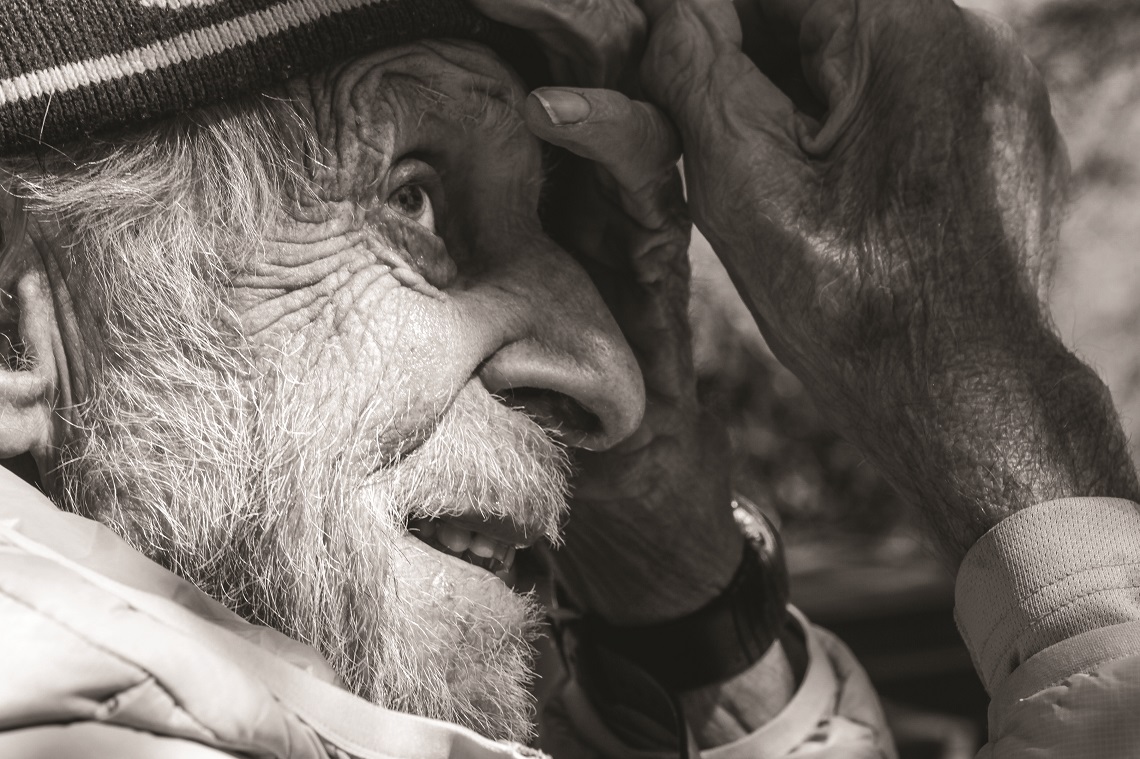
In Beckey’s final years, time finally caught up to a body that had, for so long, defied it. But his spirit never wavered. And he never stopped looking skyward.
Just a couple of months before he passed away, Bond and Bittner and a few other friends took Beckey to a climbing area called Smoke Bluffs, in Squamish, BC. They helped him into his harness and climbing shoes and steadied him as he shuffled from his wheelchair to the base of the cliff. With help on the rope from Bittner, this 94-year-old marvel, stooped and frail, straightened a bit and began to inch up the rock face on gnarled, arthritic fingers. He climbed a few vertical feet before his strength gave out and Bittner lowered him softly to the ground.
Spent, Beckey returned to his chair to watch the younger crowd take turns spidering up the crag as he once did so purposefully, so elegantly. He seemed content.
Then, after a spell of rest, his gravelly voice rose once more from his time-battered frame: “I want to give it one more try.”

